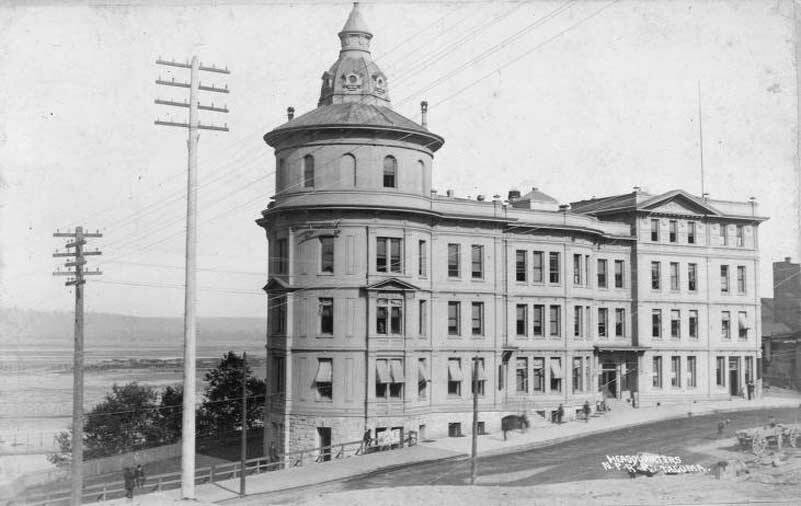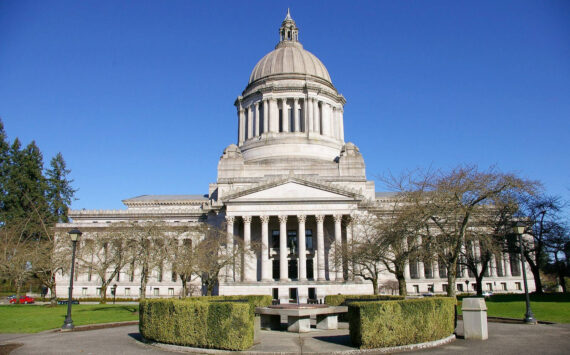By Morf Morford
Tacoma Daily Index
For a variety of reasons, from military deployments and transfers to business ups and downs, Tacoma has gone from being the “boomiest of boomtowns” (Rudyard Kipling) to a poster-child for abandoned downtowns and arsenic and lead saturated pollution.
For whatever set of reasons, Tacoma’s economy – and well-being and reputation, ebbs and flows on a semi-regular basis.
In our history visions of utopian communities and creative/industrial dominance dazzled – and then usually betrayed – investors and innovators.
We still seem to act like the perpetually jilted romantic who is always the last one left on the dance floor.
Our hopes rarely match the reality.
Whether it is Hollywood or Amazon, we throw ourselves at whatever economic suitor that would have us.
And, like some predictable Hallmark romance holiday special, we get dumped for that more attractive rival up north.
Here are just a few examples.
Stay tuned for the next can’t fail, irresistible, this one is really going to work, golden opportunity to hit our soft spot for making the big time.
Hollywood-By-The-Sea
Almost exactly one hundred years ago, an imported visionary by the name of H.C. Weaver launched the fantastic notion of starting a motion picture industry in Tacoma.
He focused his cinematic/entrepreneurial dream on a vacant five acre tract of property just above Titlow Beach and by late 1924 had constructed one of the largest movie-making sound stages in America.
Weaver productions made three films that went into national and worldwide distribution, two of them directed by W. S. Van Dyke who would go on to fame in the other Hollywood and be nominated for an Academy Award for directing The Thin Man.
Some of the biggest names in American, if not international, film from Charlie Chaplin to Orson Welles made Tacoma one of their regular stops.
You know that roar of the lion in vintage MGM films? The first MGM film introduced with the sound of a lion’s’s roar was White Shadows in the South Seas directed by W.S. Van Dyke.
Van Dyke also went on to make the hugely popular Tarzan films and was nominated for an Academy Award Oscar for The Thin Man (written by former Tacoma resident Dashiell Hammett).
But before that Hollywood recognition he was in Tacoma making films for Weaver Studios and in 1925 directed the lost, but recently found silent film, Eyes of the Totem.
Shifts in technology (in this case the replacement of silent films by “talkies”) and Tacoma’s seemingly eternal enemy; fire, (in 1932) put an end to Tacoma’s film fantasies.
You can see more on Tacoma’s flirtation with film here – tacomahistory live/2019/07/08/tacoma-cinema-obscura/.
Terminus Town
Tacoma was born in (and seems to continually inhabit) a burst of optimism tempered by looming, and seemingly inevitable desperation.
A generation before its Hollywood dreams, railroads came to town.
The first important formal building in the new downtown core was the (still standing) Land Office of the Northern Pacific Railroad (NP) and headquarters for the grand corporation that had just picked Commencement Bay for its Pacific terminus and, in typical Tacoma fashion, was itself on the verge of bankruptcy.
Federal land grants were an asset NP could sell – and they did.
Theodore Hosmer was the NP’s special agent in charge of city planning and land sales (and the brother in law of Charles B. Wright, chairman of the railroad’s board of directors).
And, as every Tacoma resident knows, Hosmer and Wright can be found on many streets, schools and parks around the city today.
Rails and railroads are still a presence in and around Tacoma, of course, but as a ticket to prosperity and prominence, they too left us at (and with) the station.
Through-out these years, and certainly since, mansions and architectural tributes have been built, torn-down, restored, forgotten, and all too rarely, recognized and restored (like Union Station) to something approaching their former glory.
As many of us know, our built history is as erased as it is honored.
But in photos or brick and mortar, our buildings represent us far more than any civic pledges or official statements.
Tacoma’s architecture matches its aspirations – and delusions.
Debt, technology shifts and fire seem to steer our destiny even more than grand visions.
Tacoma is a perpetual Cinderella, still waiting for its prince to come.
But we don’t need to be “discovered”; we just need to appreciate and build on what we are and what we have.
That is our true and enduring destiny.





